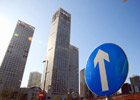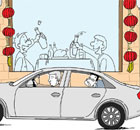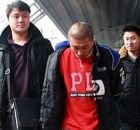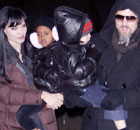Asia-Pacific
1 dead, many injured in Filipino New Year revelry
(Agencies)
Updated: 2010-01-01 09:02
 |
Large Medium Small |
MANILA, Philippines: Hundreds of Filipinos were injured by firecrackers and celebratory gunfire despite a government scare campaign in which doctors displayed surgical saws on TV to warn New Year revelers what awaited them if they were hurt by fireworks, officials said Thursday.
Health Secretary Francisco Duque said 230 people had been injured by early evening and the number was likely to more than double by midnight as superstitious Filipinos bid goodbye to a year of natural disasters and political violence.
| ||||
More than 50 hospitals nationwide were on full alert, their emergency rooms staffed with trauma doctors for the expected influx of injured revelers.
"We're prepared for the worst," Duque said as he inspected preparations at an emergency ward in Manila's Tondo slum district, an area notorious for the use of large illegal firecrackers.
Many Filipinos believe that noisy New Year's celebrations drive away evil and misfortune. But they have carried that superstition to extremes, exploding huge firecrackers and firing guns to welcome the new year despite threats of arrest.
New Year's Eve revelry in the predominantly Roman Catholic country has become among the most violent in the world. Last year, 737 people were injured, mostly by firecrackers. At least 17 people were hit by gunfire at the height of wild celebrations, including a woman who died, according to the Department of Health.
Although the number of injuries has tapered off in recent years, largely due to hard economic times and the government's scare campaign, the figures remain alarming, Duque said.
The government has gone to extremes to dissuade dangerous celebrations. The health department has shown gory pictures of mangled hands and eyes in posters and on its Web site. Government doctors have used bone saws and drills to amputate fingers in mock surgeries shown on TV, but the dangerous tradition has continued.
"It's extremely difficult because it's embedded in the mindset of Filipinos that lighting up those firecrackers drives away misfortune," Duque told The Associated Press. "And it's been a very, very difficult year."
Back-to-back typhoons struck the Philippines starting in September, engulfing the capital, Manila, in the worst flooding in 40 years. The storms killed hundreds and displaced millions of people.
A political massacre blamed on a powerful warlord clan claimed 57 lives, including 30 journalists and their staff, in southern Maguindanao province. It was the deadliest single attack on media workers in the world.
Capping the disasters was the eruption of Mayon volcano southeast of Manila, which prompted the evacuation of about 47,000 villagers, who spent the Christmas and New Year's holidays in crowded evacuation centers.










